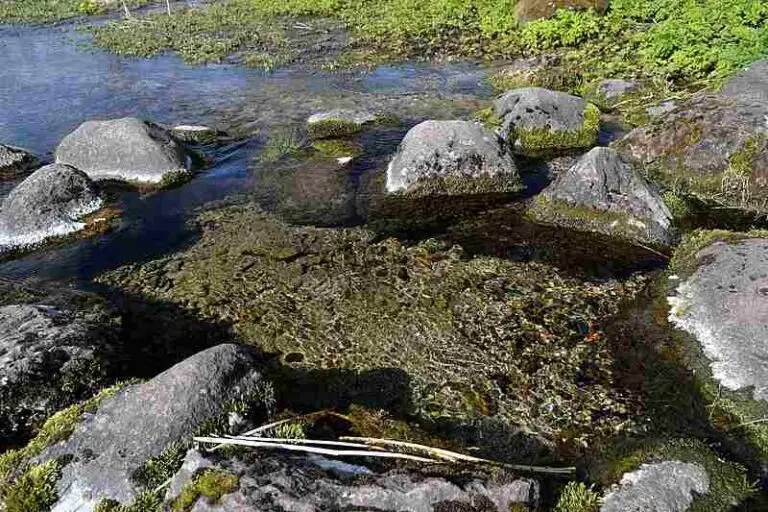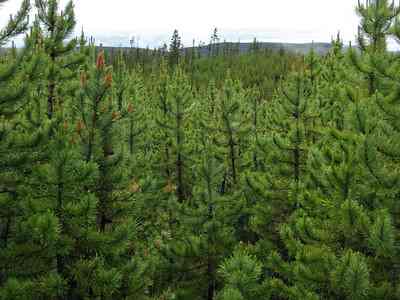Geothermal Energy Meaning, History, Principle, and Applications Explained
Geothermal energy is heat energy from the subsurface of the Earth, and it works by the transfer and distribution of this energy to the Earth’s surface through conductive materials.
The outline of this article is as follows;
-Geothermal Energy Applications
What is Geothermal Energy?
Geothermal energy is energy derived in the form of heat, from the deep region beneath the Earth’s surface.
Another approach by which we can define it, is through the interpretation of terms. The word ‘Geothermal’ was coined from two Greek words; Geo (γη), which means Earth; and Therme (θερμότητα), which means Heat.
History of Geothermal Energy
The use of geothermal power dates back to as far as 10,000 years ago, when hot springs were utilized for therapeutic and religious purposes in parts of the world (these activities are most recognized in North America, based on archeological observations) [6].
In Europe, hot springs (which are heated by geothermal energy) became important centers of attraction before the first century, renowned for their assumed healing capabilities.
Evidence of this is provided by different accounts, such as those of Pliny the Elder (23-79 CE), and Hippocrates (460-320 BCE), both of which advocate the health benefits of bathing in hot mineral springs [13; 4].
The Ancient Romans attached religious value to hot springs, around which they built shrines and carried our religious activities, as shown by archeological records [3].
Aside these, energy from hot springs was used for heating purposes, especially in winter, both in Ancient Rome and North America.
Modern use of geothermal power can be traced back to the year 1807; when European explorer John Colter observed hot springs in the Yellowstone area of where is now known as the United States.
The ‘City of Hot Springs’ was one of the products of this discovery, which in 1830 became the first point of commercialization of this type of energy, as hot spring baths were carried out at a fee of about one dollar [9].
Prior to 1830, in 1818; François Jacques de Larderel, a French engineer, introduced a method of extraction of boric acid using geothermal energy from hot springs in Italy [7]. This is the earliest recorded industrial use of GE.
In 1847, William Bell Elliot came upon a vast hot spring-valley in California, United States; which in 1852 became the site of a prominent spa called the Geysers Resort Hotel [8].
Between 1850 and 1870, the commercialization grew significantly, with developments such as the Calistoga, built by businessman San Brannan (in 1862); and the Oregon Hot Lake Hotel (1864). Residential building around hot springs also became fairly common.
In the 1890s, large-scale, public utilization of geothermal power was introduced; with the development of the district heating system in Idaho, which supplied hot water directly to over hundred homes. This development served as the precursor to modern-day district heating, which is now more widely practiced in and beyond the United States.
The turn of the twentieth century marked a milestone in energy development, with the commencement of construction of the first geothermal power plant in 1904 [5]. Piero Ginori Conti; an Italian scientist, is credited with this development, based on the invention of a geothermal-driven generator for producing electricity, in the same year.
In 1913; the world’s first major geothermal power plant (having been commenced in 1904) was completed, in Larderello, Italy [12].
Following the discovery of electricity-generation from geothermal energy, John Grant, in 1921, drilled wells at the geothermal site called The Geysers, thereby generating up to 250 kilowatts, with which buildings within the area were powered.
In 1927, a well was drilled to a depth of about 1,000 feet in Idaho, serving as a pioneer of the practice of space heating and heat-exchange using geothermal power. This practice grew widespread in the following years (1930-1950), with the deployment of space heating in several residential buildings.
The United States built its first power plant in 1960, in San Francisco, which became one of the most prominent geothermal energy complexes in the world [2].
Construction of the plant was commenced around 1951. A turbine-based design was employed, where geothermal power provides the steam which is used to drive the turbines and generate electricity.
With increased awareness regarding the potentials of geothermal power, corporations such as the Geothermal Resources Council (formed in 1970) institutionalized its study, development and use.
Other developments so far include the formation of more corporations, agencies, and policies surrounding geothermal power in the US and beyond. More geothermal plants have been built around the world, and effort are consistently being made to optimize the cost, effectiveness and efficiency of this form of renewable energy.
The Geysers Geothermal Complex is the largest GE layout in the world (as of 2022), and is located in California, United States, with at least 22 (turbine-based) power plants and an estimated capacity of about 1,590 MW.

Origin of Geothermal Energy
In simple terms, GE is generated within the Earth.
To fully understand the origin of GE, it may be necessary to consider the concept of the geothermal gradient, which represents the trend of increasing heat with depth from the surface of the Earth.

Due to the geothermal gradient, heat can be encountered at depth beneath the Earth’s surface. This heat may exceed 4000 °F, and represents GE.
Because the subsurface of the Earth is always hot, GE can be described as a renewable form of energy.
The foregoing paragraphs suggest that geothermal energy occurs in the form of heat. This heat is said to have originated from the release of cosmic energy when the Earth was formed billions of years ago.
Because GE is stored in, and transferred by rocks, fluid, and other materials in the subsurface, it is important to understand the nature of the Earth (in terms of its structure and composition) in order to fully comprehend the origin of this energy.
Structurally, the Earth is composed of three main layers. These are listed in order from top to bottom, as follows;
1. The Crust, which is the topmost layer, dominantly composed of silica, alongside other minerals, and having a thickness of 15-35 miles
2. The Mantle, which occurs directly underneath the crust, composed of silica, alumina, magnesia, and other minerals, and having a thickness of approximately 1,800 miles
3. The Core; which comprises of the inner core (solid) and outer core (molten/semi-solid). It is dominated by iron and magnesium, and is about 3,000 miles thick.
Layers of the Earth are differentiated based on their physical state and their composition. Estimates of the temperature of the deep subsurface at the core of the Earth, fall between 5,000°C and 6,000°C. The presence of heat (GE) is responsible for some natural phenomenal like volcanic eruption.
However, studies of the Earth’s structure have revealed that the underlying source of geothermal energy is radioactive elements in the subsurface of the Earth [1]. These elements, such as Uranium and Thorium, slowly disintegrate over time, in a process known as radioactive decay. At the same time, they release large amounts of radiant energy which heats the subsurface.
This implies that the heat from the subsurface of the Earth, which we refer to as geothermal energy, originates from the process of radioactive decay of elements like Thorium and Uranium which are relatively abundant at the Core of the Earth.
Although GE occurs in the subsurface at every part of the world, there are some points from which it can be harnessed very effectively. These are known as geothermal reservoirs, and are often potent due to the presence of fluid which serves as an efficient conductor (compared to rocks) to transfer the GE to the surface, where it is needed.
How Geothermal Energy Works
Geothermal energy works by heat transfer between the subsurface and the Earth’s surface.
The underlying principle behind the use of geothermal energy is heat transfer.
Because GE occurs at depth, wells must be dug at least a mile deep into the subsurface, to access it. At this depth, underground geothermal reservoirs occur. These reservoirs primarily consist of groundwater which has been converted to steam by geothermal heat.
In cases where the geothermal reservoir is not effective to produce energy, a process known as hydraulic stimulation is used to enhance the geothermal reservoir’s effectiveness and productivity.
From geothermal wells, hot water (and steam) is pumped to the surface, where it is used for various purposes.
Among the uses of GE are domestic applications like cooking and bathing. District heating represents an example of the communal, domestic use of GE. This approach works by pumping geothermal resources (hot water) from geothermal wells into pipes which transport these resources to residential buildings.
Another application of geothermal resources is in anti-freeze operations, where these resources are used to melt snow on roads by transmitting GE (in the form of heat) through underground pipes beneath the snow-covered surface.
The heat from geothermal reservoirs can also be used to generate electricity in geothermal power plants. Any of three main methods can be applied to generate electricity from GE. These methods include flash, binary and dry steam methods.
The flash method involves pumping hot water from geothermal reservoirs, to the surface, under high pressure. The pressure is used to vaporize the water and the steam is transmitted to a turbine which it drives to generate electricity. A separator is usually incorporated into flash geothermal power plants, to facilitate the process of separating vapor from the hot water. This method is used in varied forms, and is a relatively common and simple approach for generating electricity from geothermal energy.

Binary method of electricity-generation using GE, involves the circulation of two fluid streams; a high-temperature fluid stream, and a (relatively) low-temperature fluid stream.
The high-temperature fluid stream often comprises of hot water which is pumped from the geothermal reservoir, while the low-temperature fluid stream is often composed of another liquid with a lower boiling point than water. Examples of fluids used for this purpose include ammonia, iso-butane and pentane.
The two fluid streams are pumped at the same time, through a heat-exchange system. In most cases, the hot water is made to flow through a conductive vessel (the heat exchanger) which is in contact with the low-temperature fluid. This arrangement enables to be transferred from the hot water (high-temperature fluid) to the low-temperature fluid, causing the latter to vaporize, and this vapor is used to drive a steam turbine and produce electricity.
In some descriptions, the high-temperature fluid is also called the Primary fluid, while the low-temperature fluid is called the Secondary fluid. Binary method is one of the most effective methods for generating electricity from geothermal energy, and it is believed that many future geothermal power plants will be designed to function on the basis of this method.

The dry-steam method makes direct use of geothermal resources, by pumping high-temperature water from geothermal reservoirs, and using this steam to drive a turbine and generate electricity [10].
In order for steam to be effectively isolated from the hot water, a separator is usually needed. This is similar to the approach used to isolate steam in the flash method. However, the dry-steam method differs from the flash method on the basis of pressure application.
In the flash method, vaporization and steam-formation, are facilitated by the application of high pressure to the system. This is not the case in the dry-steam method, which does not necessarily involve the application of any external pressure.
Because dry-steam electricity-generation does not rely on external pressure to form steam, it is only applicable with geothermal reservoirs that contain very large amounts of GE, with temperatures that generally exceed 180°C.
The use of dry-steam method is a prominent practice in the geothermal power industry, with an example being the Geysers in California, United States, where dry-steam electricity generation is used on a large-scale basis.

Geothermal Energy Applications
1). In Buildings
In buildings, GE is utilized for heating and cooling applications.
It is an economic and flexible option, especially because GE is renewable. Geothermal power utilization is also a potential means of achieving sustainability, if effectively applied.
A mechanism similar to binary fluid circulation is often employed for geothermal space heating. Based on this mechanism, a conductive fluid like water is made to flow through pipes that traverse the building. One of these fluid streams absorbs heat from the building and transfers it to the geothermal reservoir in the subsurface. This flow path is usually used in summer, when internal temperatures are relatively high.
The second fluid stream transfers heat from the geothermal reservoir, to the interior of the building. This stream is employed usually in the winter, when internal temperatures are relatively low.
Aside space heating and cooling, GE may also be used for water heating, in buildings.
2). In Agriculture
In greenhouse cultivation, temperature regulation is a common practice. This often requires that mild heat be applied to plants, especially under unsuitably-low temperature conditions.
GE is known to provide a good option as an energy source for such heating applications in agricultural greenhouses. Irrigation water is often warmed using GE [11]. In countries like Italy, this approach is quite commonly used when growing vegetables, and optimizes productivity even under unsuitable weather conditions.
Another agricultural use of geothermal power is in aquaculture. Because many aquatic organisms require a certain temperature for their optimum function and survival, warm water is often supplied using geothermal heat exchange systems in fish farms.
3). In Industry
Geothermal energy replaces fossil fuels in many industrial applications. Food-processing is one prominent example of such applications, where geothermal energy supplies the heat that is used to dry food materials as part of the processing procedure.
Other industries like the cement industry, as well as the pulp and paper industry, make use of GE in various ways, although mostly for drying purposes.
Although rarely, geothermal energy also finds application in mining and exploration operations. This is especially the case in mining sites with significant geothermal potential, where high-temperature geothermal fluids are abundant.
4). In Wastewater Treatment
Wastewater treatment generally requires (relatively) high temperature to occur effectively.
In cold climatic regions, the treatment of wastewater may involve the application of GE which will help to heat the wastewater while it is treated.
5). In Infrastructural Maintenance
Infrastructure such as pavements (both flexible and rigid) or roads, may require an antifreeze mechanism to prevent the accumulation of ice and its effects, during the winter.
Geothermal power, supplied through heat pumps, can serve as the driver behind this antifreeze mechanism. In geothermally active regions, it is not very uncommon to use geothermal heat pumps to control ice accumulation on public infrastructure.
Conclusion
The term; Geothermal is derived from two Greek words; ‘Geo’ and ‘Therme’, which mean ‘Earth’ and ‘Heat’ respectively. Based on this analogy, geothermal energy can be defined as heat energy derived from the Earth.
Geothermal energy works by the principle of heat transfer.
The history of GE discovery and utilization dates back to several thousand years. Hot springs represent the earliest medium of direct interaction with this type of energy, for man. In the ancient times, hot springs became centers of attraction and fascination, known throughout and beyond Europe, for their alleged therapeutic properties.
From the early nineteenth century and onward, America became the center of GE development. This began with discoveries of hot springs by European explorers within the region, and soon led to the elaborate, large-scale commercialization of geothermal energy.
In order to understand how geothermal energy works, it is important to consider the generation of electricity using geothermal energy. Three main approaches are employed here, and they include the dry-steam method, the flash method, and the binary method.
The essential mechanism involves transferring hot fluid from geothermal reservoirs, to the surface, where it is used to provide or produce steam that drives a turbine and produces energy.
Geothermal energy has a unique advantage of being renewable, which means that its usage is relatively safe for the environment, and is in line with the sustainable development agenda.
There are numerous applications of geothermal energy, which include space heating, water heating, industrial processing, supportive source of electricity for mines in geothermally-active regions, crop cultivation, aquaculture, and infrastructural maintenance.
References
1). Carrington, S. (2011). “Geothermal energy: All the benefits of nuclear – but none of the problems.” Available at: https://www.theguardian.com/environment/damian-carrington-blog/2011/jan/18/geothermal-energy-nuclear. (Accessed 10 February 2022).
2). Cart, J. (2014). “Geothermal power industry lost steam but may be poised for comeback.” Available at: https://www.latimes.com/local/la-me-geothermal-20141020-story.html. (Accessed 10 February 2022).
3). Dawson, S. (2017). “The Story Behind the Roman Baths in Bath.” Available at: https://theculturetrip.com/europe/united-kingdom/england/articles/the-story-behind-the-roman-baths-in-bath/. (Accessed 10 February 2022).
4). Dvorjetski, E. (2004). Healing Waters: The Social World of Hot Springs in Roman Palestine.” Biblical Archaeology Review; 30:4. Available at: https://www.baslibrary.org/biblical-archaeology-review/30/4/3. (Accessed 10 February 2022).
5). EIA (2021). “Geothermal explained: Geothermal power plants.” Available at: https://www.eia.gov/energyexplained/geothermal/geothermal-power-plants.php. (Accessed 10 February 2022).
6). Freed, E. C. (2006). “Ask the Green Architect: Geothermal heating systems, green specs and sources.” Available at: https://www.greenbiz.com/article/ask-green-architect-geothermal-heating-systems-green-specs-aources. (Accessed 10 February 2022).
7). Heath, A. (2019). “Where did geothermal energy originate?” Available at: https://easierwithpractice.com/where-did-geothermal-energy-originate/. (Accessed 10 February 2022).
8). Howell, N. (2021). “History of Geothermal Energy – Timeline.” Available at: https://earthandhuman.org/history-of-geothermal-energy/. (Accessed 10 February 2022).
9). Jones, R. I. (1955). Hot Springs: Ante-Bellum Watering Place. The Arkansas Historical Quarterly, 14(1), 3–31. Available at: https://doi.org/10.2307/40018679. (Accessed 10 February 2022).
10). Rudiyanto, B.; Jember, N. P.; Illah, I.; Pambudi, N.; Cheng, C. (2017). “Preliminary Analysis of Dry-Steam Geothermal Power Plant by Employing Exergy Assessment: Case Study in Kamojang Geothermal Power Plant, Indonesia.” Case Studies in Thermal Engineering 10(C). Available at: https://doi.org/10.1016/j.csite.2017.07.006. (Accessed 10 February 2022).
11). Shah, M.; Sircar, A.; Deen, P; Varsada, R.; Vaishnani, S. (2018). “Assessment of geothermal water quality for industrial and irrigation purposes in the Unai geothermal field, Gujarat, India.” Groundwater for Sustainable Development 8. Available at: https://doi.org/10.1016/j.gsd.2018.08.006. (Accessed 10 February 2022).
12). Unwin, J. (2019). “The oldest geothermal plant in the world.” Available at: https://www.power-technology.com/features/oldest-geothermal-plant-larderello/. (Accessed 10 February 2022).
13). Van Tubergen, A.; Van der Linden, S. (2002). “A brief history of spa therapy.” Annals of the Rheumatic Diseases 61(3):273-5. Avaiable at: https://doi.org/10.1136/ard.61.3.273. (Accessed 10 February 2022).





